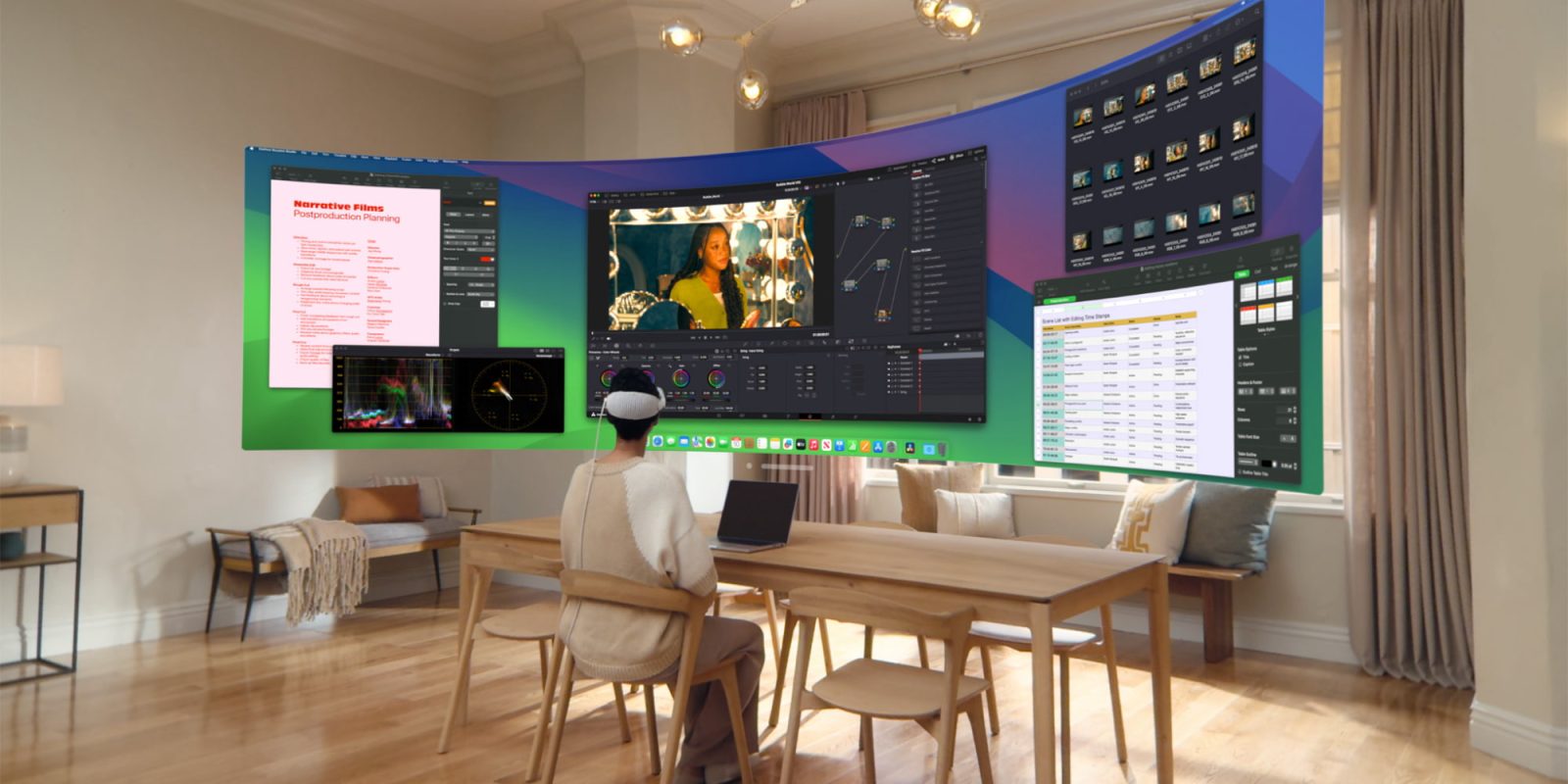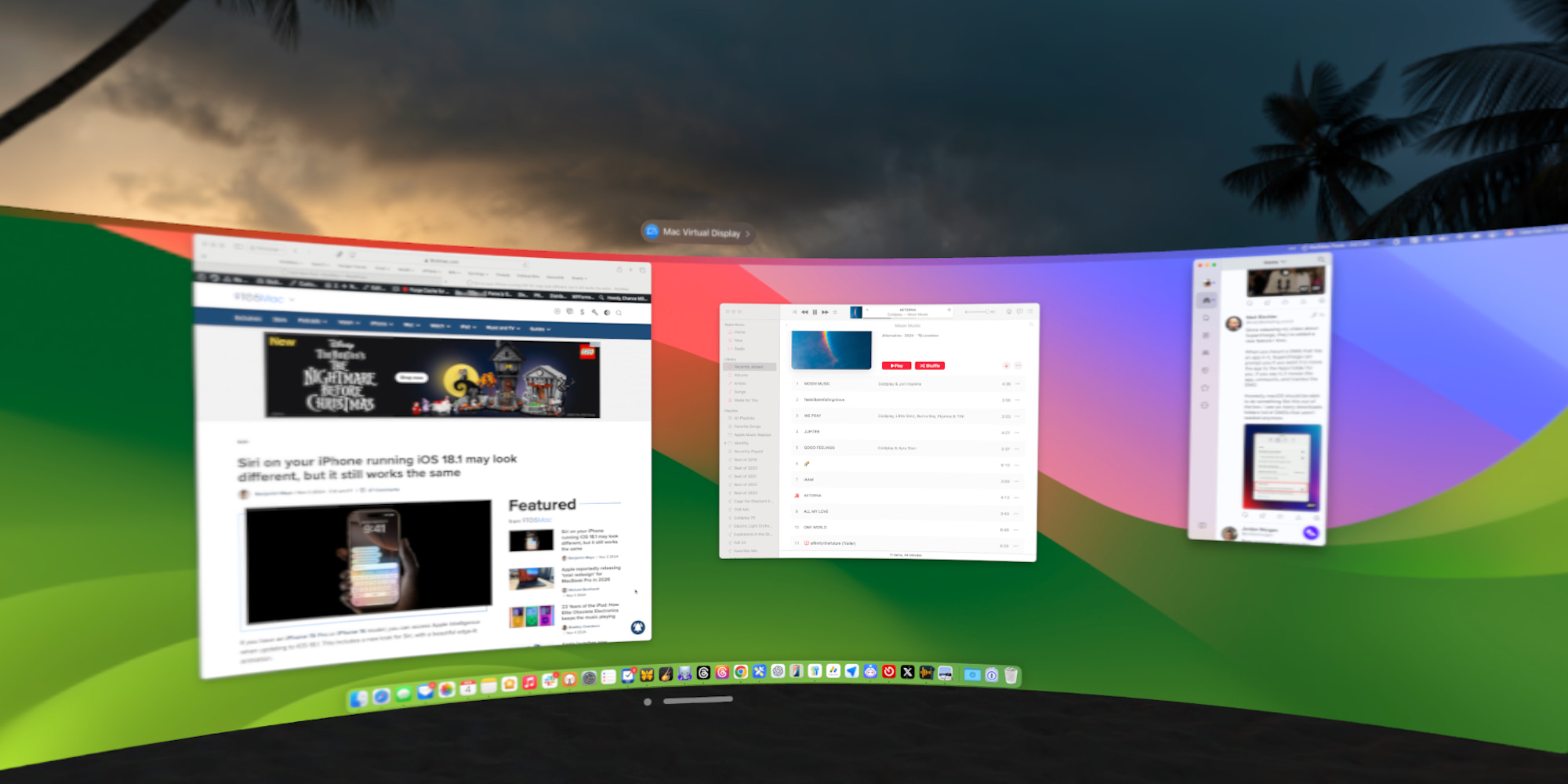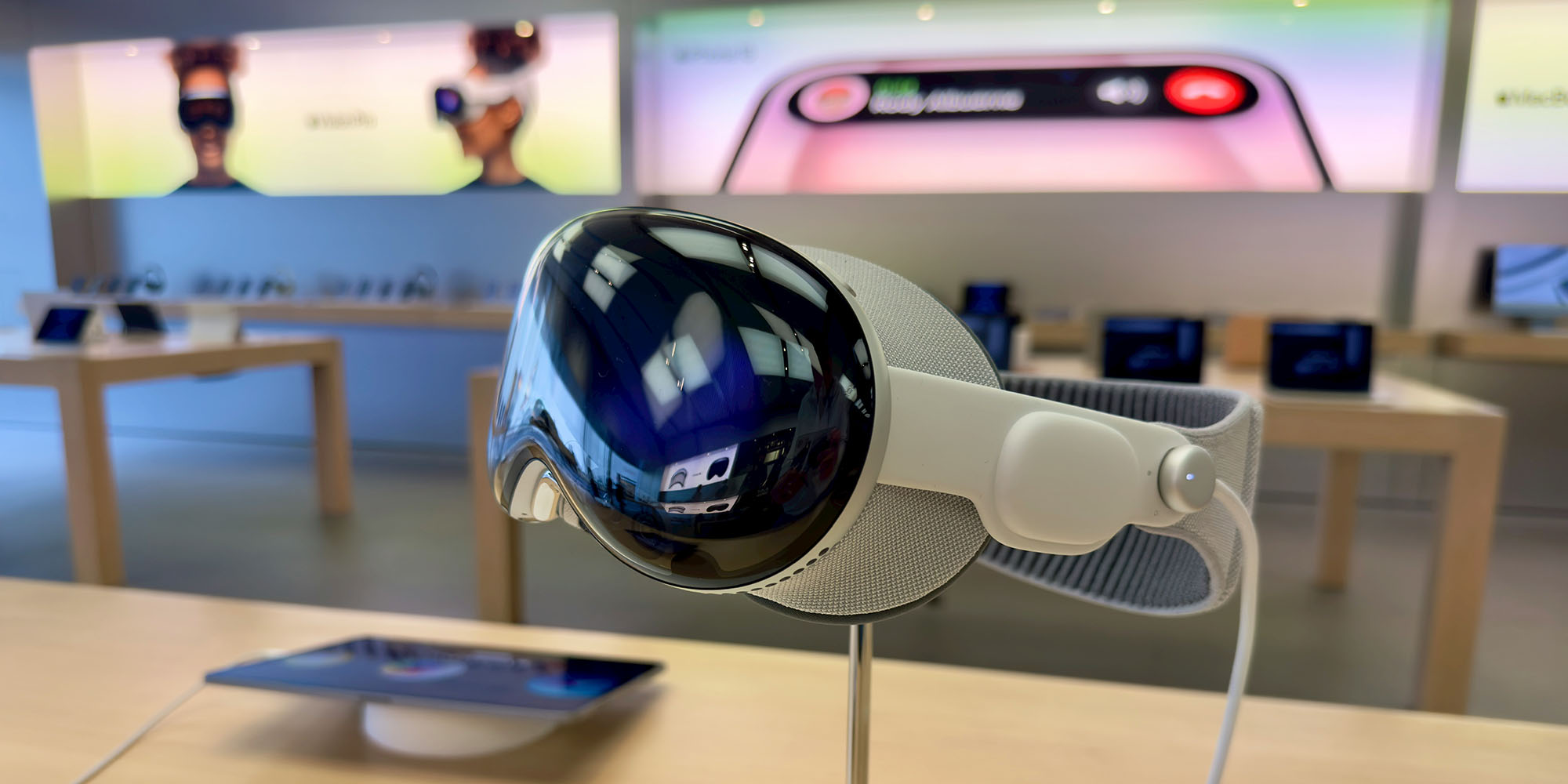
The Vision Pro is getting close to a year of life, and Apple’s next software update has some big changes in store that could alter usage patterns. Mac Virtual Display, one of the best Vision Pro features, is getting three upgrades in visionOS 2.2 that provide a huge boost to spatial computing.
Wide and Ultrawide display modes
Ever since launch, Mac Virtual Display has been among the Vision Pro’s best features. But it hasn’t truly taken advantage of the Vision Pro’s unique strengths until visionOS 2.2.
The current Mac Virtual Display feature lets you mirror your Mac’s screen in a spatial visionOS window. But it’s only available in a very constricted rectangular shape. You can make that rectangle larger or smaller, but it’s still the same basic shape.

In visionOS 2.2, there are two new display modes—Wide and Ultrawide—that tap into the unique advantages of spatial computing.
Both new modes offer a much wider canvas to run all your Mac apps on. Since the space around you isn’t limited to the dimensions of an average MacBook Air or MacBook Pro, it didn’t make sense to limit Mac Virtual Display to the traditional rectangular shape.
Having more options for your Mac’s virtual display means you can better utilize the width of your environment and do a lot more with your Vision Pro at once.
High quality display resolution
Another key change ensures that no matter which display mode you’re using, the Vision Pro will make macOS crisp and clear.
Display resolution with Mac Virtual Display is now better than ever. The high-res upgrade is a welcome change for users who feel like the existing resolution doesn’t quite cut it.
visionOS 2.2 closes the resolution gap between content rendered in a native visionOS app experience and what you’ll find in a mirrored macOS app via Mac Virtual Display.
Routing audio to the right place

Finally, visionOS 2.2 also corrects an odd behavior that’s existed ever since the Vision Pro debuted. Previously, audio for your mirrored Mac would be routed through the Mac itself—not the Vision Pro.
Top comment by BarelyLucid
The Vision Pro is barely acting as a computer in this scenario, and definitely not acting as a “true next gen computer”.
It’s a headset wirelessly tethered to a “true computer” aka a Mac.
It’s a good update, but drop the hyperbole.
There were workarounds for this issue, such as connecting AirPods Pro or another pair of Bluetooth headphones to your Mac. But that still wasn’t a proper solution since Mac Virtual Display and your other visionOS apps would send audio through different outputs.
Now, Mac Virtual Display audio gets routed through the Vision Pro itself. So whether you’re using the built-in speakers or AirPods, you can get a consistent audio experience across all your spatial computing.
Next-gen computing: Wrap-up
It would be great if Mac Virtual Display didn’t actually require a Mac. Some day maybe that will be the case. But for now, the upgraded Mac Virtual Display experience in visionOS 2.2 provides a computing experience you can’t get anywhere else. It feels like next-gen computing, which perhaps is what ‘spatial computing’ is all about.
Have you tried the upgraded Mac Virtual Display feature in visionOS 2.2? Let us know in the comments.
Best Vision Pro accessories
- Vision Pro aluminum dock stand
- Spigen travel case for Vision Pro
- AirPods Pro 2 (currently just $169, discounted from $249)
- Battery holder with belt clip and more
FTC: We use income earning auto affiliate links. More.


Comments